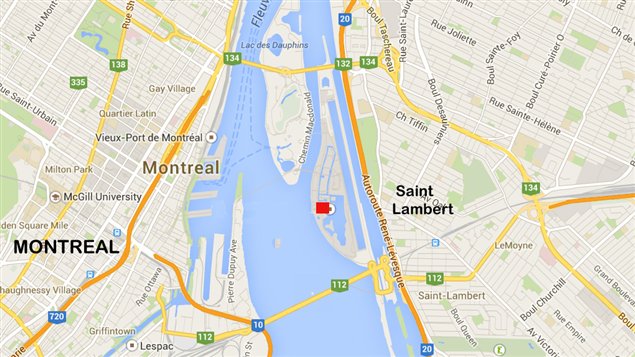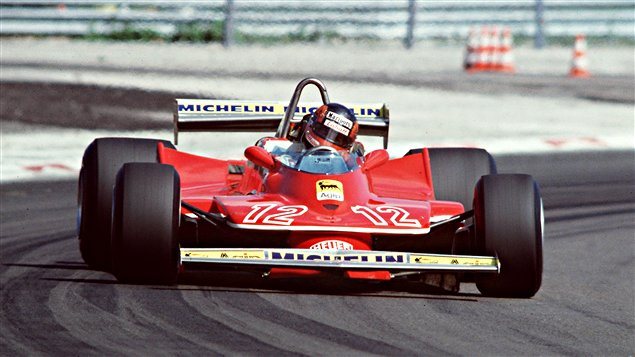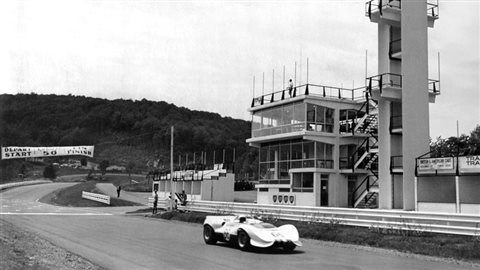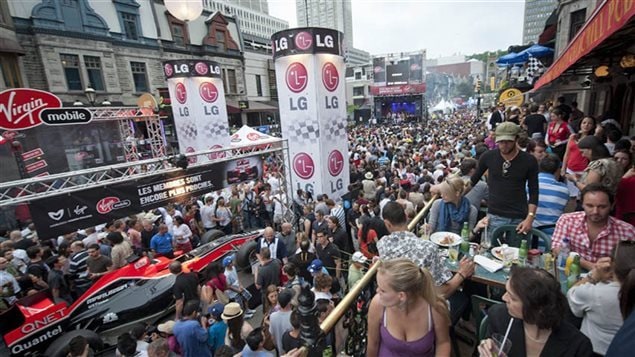The circus has come to Montreal and with it thousands of followers from around the world. The Formula One race has landed in Montreal for its only stop in Canada, and one of two in North America.
Because of that, thousand of fans from across Canada and the US have thronged to the city, along with plenty of European fans, with many jetsetters among them.

While some residents near the track, notably in St Lambert, complain abou the noise, there is no denying the race injects millions of dollars into the local economy. Estimates are that it brings in some $90 million in economic spinoffs annually.
However, there is also a cost. After an earlier dispute, a deal was singed with F1 in 2014, to keep the race coming for the next ten years.
The deal includes $187 million in subsidies from various levels of government including $62.4 million from the federal government.
An additional $32 million for track improvements brings the total to $219 million.
As for the race fans, they come for the excitement of the races, but possibly jsut as much for the spectacle of glitz, glamour, and night life.

Not all battles are on the race track.
This year A group calling for greater control of prostitution says the race also creates an increased demand for sex tourism.
Spokespeople for “Concertation des luttes contre l’exploitation sexuelle” (CLES) translated as “ Discussion for the campaign against sexual exploitation” says Montreal is seen as a sex-tourism hotspot, and big events like the “macho” F1, as well as major cultural events increases demand and the chances that women will be exploited.
CLES is calling for the mayor to take action.
Another group STELLA, a sex-worker advocacy group has a different opinion. It says a 2011 study shows no evidence that sex tourism increases during sporting events.
The study by the “Global Alliance Against Traffic in Women” is highly critical of such allegations saying, “ Despite massive media attention, law enforcement measures and efforts by prostitution abolitionist groups, there is no empirical evidence that trafficking for prostitution increases around large sporting events. This link has been de-bunked by other anti-trafficking organisations and researchers. There is also no empirical evidence that the demand for paid sex increases dramatically during international sporting events.”
<iframe src=”http://www.cbc.ca/i/caffeine/syndicate/?mediaId=2462998540″ width=”620″ height=”348″ frameborder=”0″ allowfullscreen></iframe>
Environmental groups also complain that while we should be fighting climate change, the event promotes excess and pollution.
That has not stopped the event from bringing in tens of thousands of fans to the city, and millions of tv viewers around the world.

CANADIAN GP TIMELINE
1961- first Canadian Grand Prix- (non championship race) Mosport Raceway, Ontario
1967- F1 sanctions the Cdn GP, alternating between Mosport, and Mont Tremblant track in Quebec
1970- F1 decides Mont Tremblant track too dangerous after 1970 event, returns to Mosport only.
1978- Montreal opens its new F1 race track on Ile Notre Dame, which had been the site of the 1967 World’s Fair
1982- the Montreal track renamed in honour of it’s first winner, Canadian F1 driver Jacques Villeneuve, killed in 1982 in the Belgian GP
1987- sponsorship dispute cancels the event
1999- the wall rounding the final turn is nicknamed the “Wall of Champions” after a number of top drivers crash into it, and have continued to hit it since.
2009- dispues again lead to a cancelled event, returns in 2010
2012- for security reasons caused by Quebec students protests the extremely popular open house at the track is cancelled







For reasons beyond our control, and for an undetermined period of time, our comment section is now closed. However, our social networks remain open to your contributions.